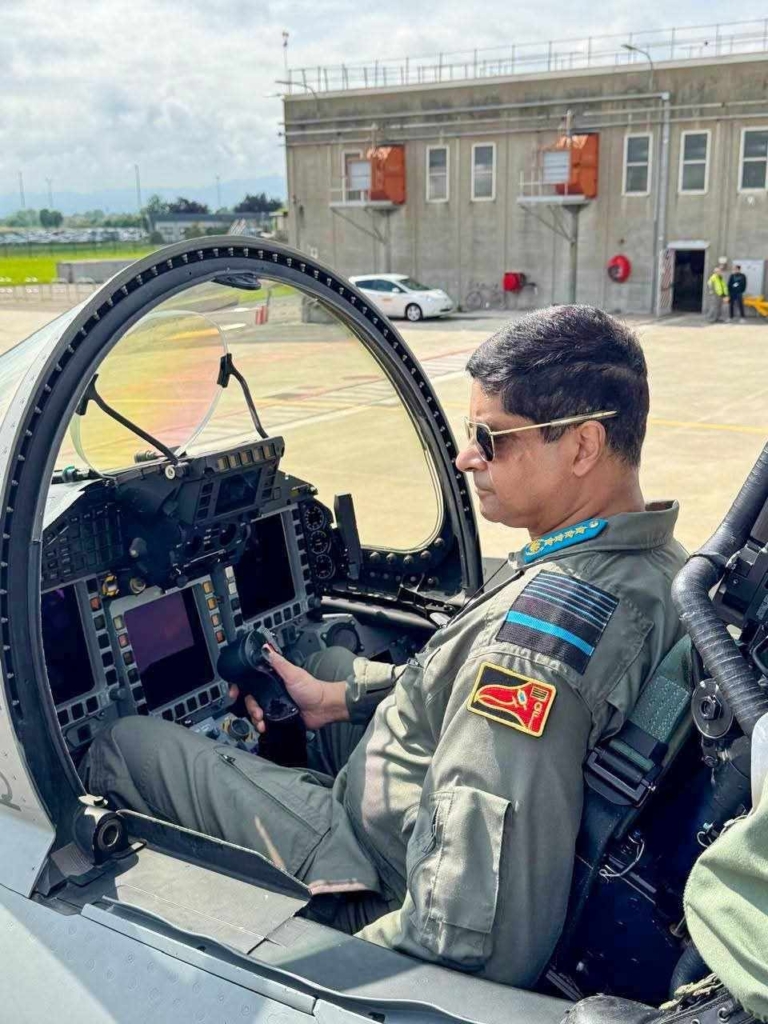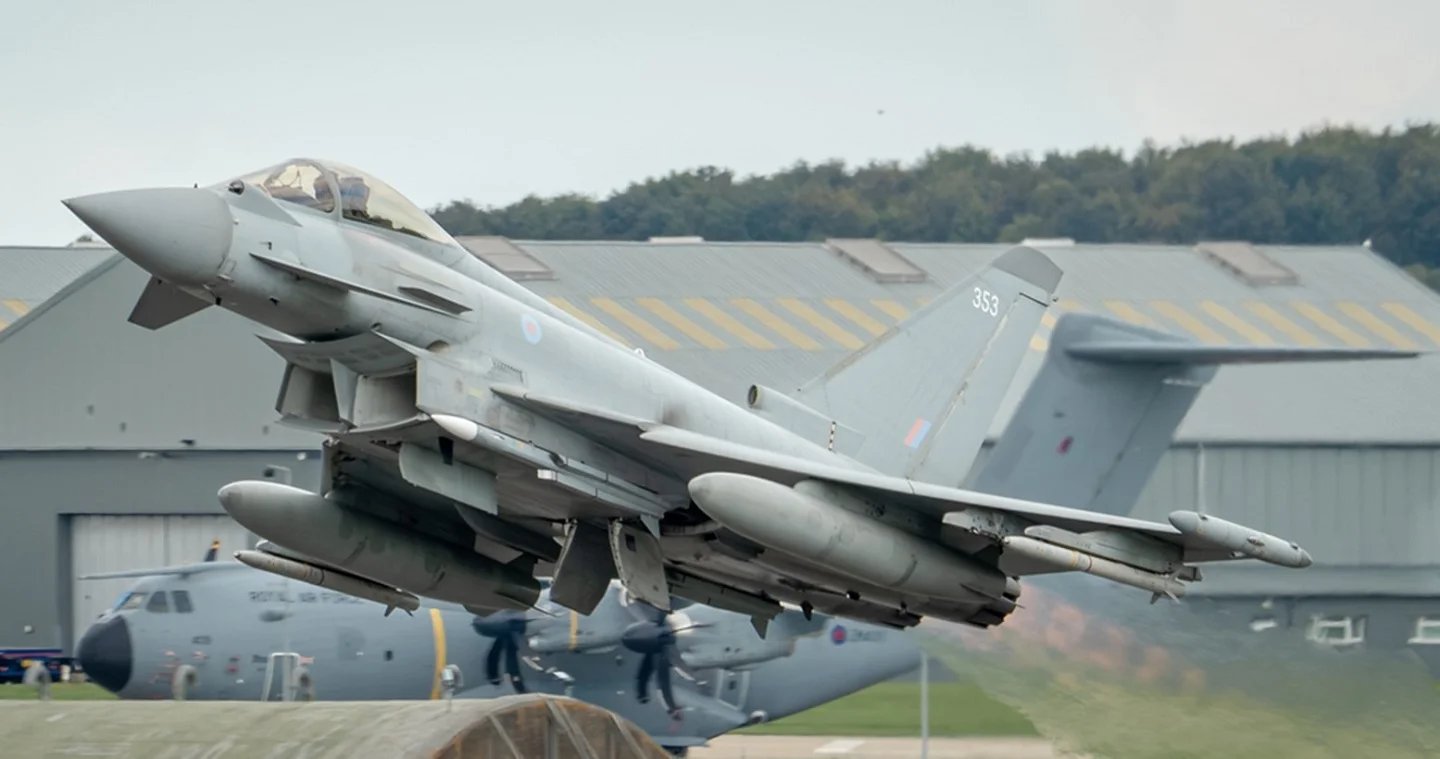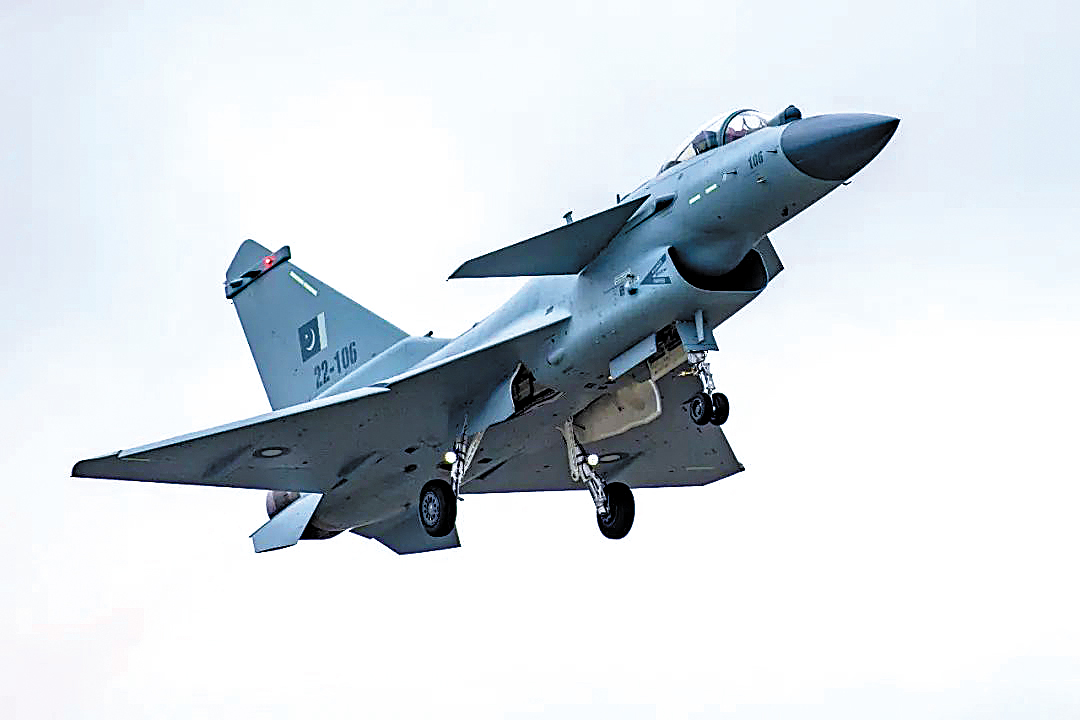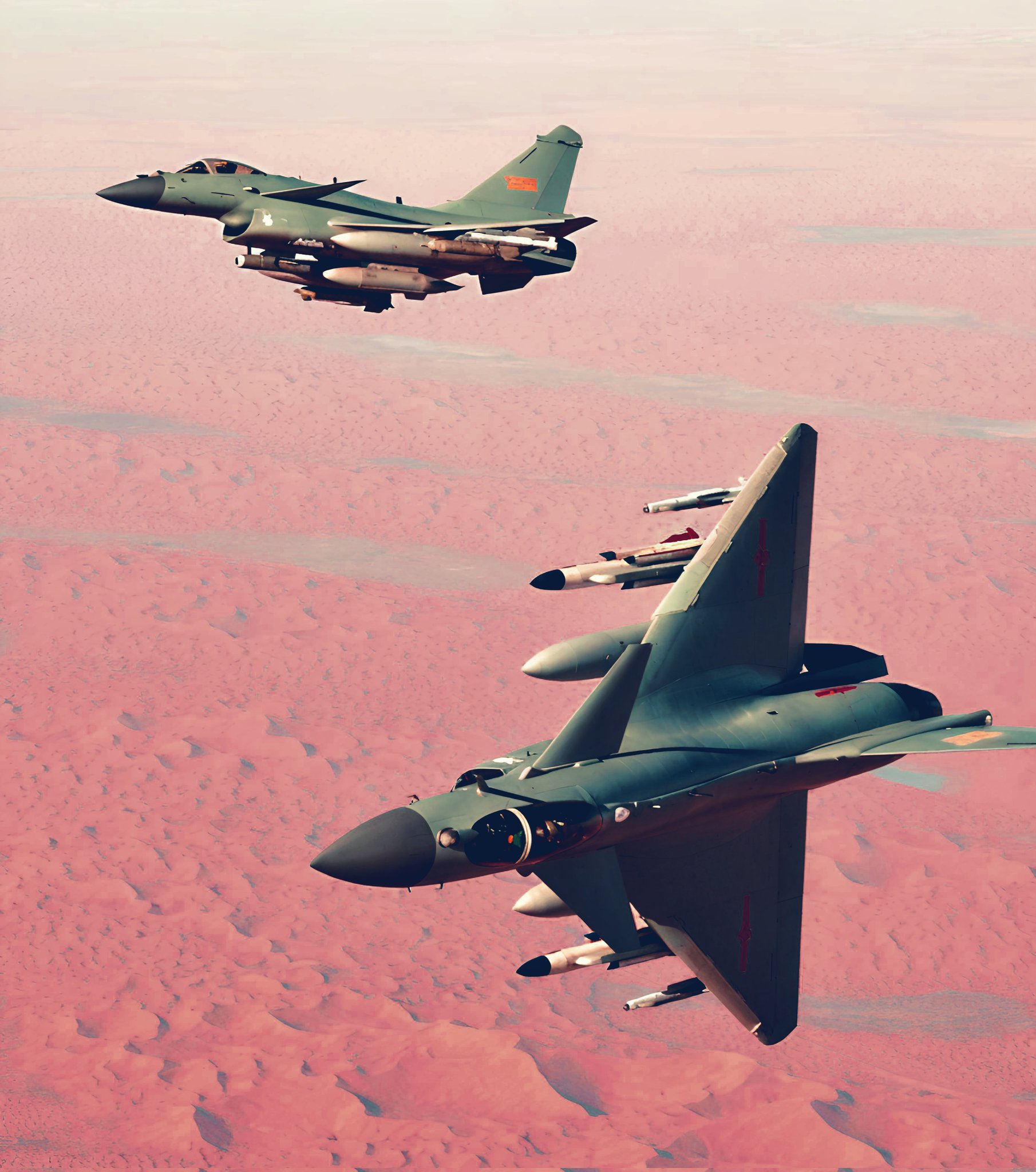Bangladesh Air Force Chief Flies Eurofighter Amid Fierce Dogfight With China’s J-10C “Rafale Killer”
The presence of Bangladesh’s top air force official in the cockpit reflects renewed momentum for the Typhoon campaign, which until recently appeared overshadowed by the increasing dominance of China’s J-10C “Vigorous Dragon” in Dhaka’s procurement calculus.
(DEFENCE SECURITY ASIA) – In a bold signal of strategic intent, the Chief of the Bangladesh Air Force and a senior combat pilot recently took to the skies in a Eurofighter Typhoon equipped with the Captor-E AESA radar system, as part of a high-profile evaluation arranged by Italian defence giant Leonardo.
The test flight underscores Eurofighter’s continued relevance in Bangladesh’s protracted Multi Role Combat Aircraft (MRCA) programme, which has attracted competing bids from China, France, and Europe’s multinational aerospace consortium.
The presence of Bangladesh’s top air force official in the cockpit reflects renewed momentum for the Typhoon campaign, which until recently appeared overshadowed by the increasing dominance of China’s J-10C “Vigorous Dragon” in Dhaka’s procurement calculus.
The Typhoon now finds itself locked in direct competition with the Chengdu Aircraft Industry Corporation’s J-10C, a 4.5-generation multirole fighter jet that has surged in popularity following its high-profile performance during recent clashes between Pakistan and India.
China’s close defence ties with Bangladesh—bolstered by weapons transfers, joint military training, and political alignment—appear to have given Beijing the inside track in Dhaka’s fighter jet decision-making process.
The J-10C’s recent battlefield record, including controversial claims of downing Indian Air Force Rafales, has only strengthened its appeal among Bangladeshi defence planners seeking proven combat capability at an affordable cost.
Still, the Eurofighter Typhoon’s campaign has gained new life amid widespread reports that Dhaka could ink a contract with Leonardo for a tranche of Typhoons during Italian Prime Minister Giorgia Meloni’s expected state visit to Bangladesh in August.

Such a development would be geopolitically significant, marking a rare European foothold in South Asia’s increasingly Sino-centric defence landscape and offering Dhaka an alternative to full-spectrum Chinese dependence.
Yet, Defence Security Asia assesses that the J-10C remains the leading candidate, citing the aircraft’s cost-effectiveness, combat record, and seamless interoperability with existing Chinese-origin platforms in the Bangladesh Air Force inventory.
During their visit, the Bangladeshi delegation was also hosted at Leonardo’s maintenance and logistics facilities supporting C-130J Super Hercules aircraft, alongside classified briefings on unmanned aerial systems and AgustaWestland rotary platforms.
“This flight marks another pivotal moment in an acquisition process that has stretched nearly a decade,” a source familiar with the programme confirmed.
In 2015, then-Air Chief Marshal Abu Esrar rejected both Russian and Chinese fighters as strategically insufficient, initiating a formal search for a Western-made multirole combat aircraft capable of restoring deterrence against regional threats.
Esrar’s vision materialized at the 2016 Farnborough International Airshow, where he inspected the Eurofighter Typhoon in detail and received an in-depth operational and systems capabilities briefing.
By 2017, Bangladesh had officially launched its MRCA programme to replace its ageing fleet, signalling a strategic pivot toward acquiring cutting-edge air combat capability.

While Dassault Aviation has offered its Rafale fighter to Bangladesh, the aircraft’s operational service with regional rival India significantly weakens its prospects in Dhaka’s eyes.
Local media reports and Defence Security Asia’s independent assessments suggest that the Bangladesh Air Force is fast-tracking its decision after witnessing the J-10C’s recent battlefield performance in Pakistan’s high-stakes confrontation with India.
According to unofficial claims, the Pakistan Air Force’s J-10C fighters shot down six Indian Air Force aircraft—including three Rafales, a MiG-29, a Mirage 2000, and a Su-30MKI—sharpening interest in the jet as a cost-effective counter to advanced Western designs.
Multiple sources indicate Bangladesh aims to procure 16 J-10C fighters in the initial phase, replacing its ageing F-7 interceptors while exploring options for a second batch as part of long-term fleet standardization.
Air Chief Marshal Hasan Mahmud Khan has confirmed Bangladesh’s urgent need to bolster its airpower edge, particularly in strike and rotary capabilities.
“We are working hard to acquire fighter jets and attack helicopters,” he said in recent comments carried by local news agencies—remarks widely interpreted as Dhaka’s tacit nod toward the Chinese offer.
Negotiations between Beijing and Dhaka are reportedly underway, with the potential J-10C acquisition expected to significantly upgrade Bangladesh’s air superiority and deterrence capabilities.

The J-10C’s integration of AESA radar and the long-range PL-15 Beyond Visual Range (BVR) missile system is central to its appeal, with the latter offering reported engagement ranges of 200 to 300 kilometres.
Developed with alleged input from Russian missile experts, the PL-15 is widely considered a direct peer competitor to the U.S.-made AIM-120 AMRAAM, signalling China’s maturing missile technology ecosystem.
Unlike earlier J-10 variants that relied on Russian engines, the J-10C features the indigenous WS-10C turbofan, improving export viability and simplifying logistics and sustainment.
If finalised, Bangladesh’s acquisition of the J-10C would mark a decisive realignment of regional airpower balances, placing advanced Chinese fighters on both India’s eastern and western flanks.
This would likely exacerbate existing geopolitical strains between Dhaka and New Delhi, already inflamed by former Prime Minister Sheikh Hasina’s controversial political asylum in India and subsequent exile.
In August 2023, Chinese media confirmed that Beijing had formally offered the J-10C to Bangladesh as a direct replacement for its fleet of outdated F-7s, previously supplied by China.
Pakistan’s induction of 25 J-10C units in 2022 was aimed at neutralising India’s acquisition of 36 Dassault Rafales, fuelling an arms race that is now spilling into Bangladesh’s procurement choices.

The J-10C is widely regarded by defence analysts as a Chinese counterpart to the F-16, with technological lineage tracing back to Israel’s cancelled Lavi fighter project.
If inducted, the J-10C’s advanced avionics, long-range sensors, and multirole combat profile would provide the Bangladesh Air Force with a quantum leap in regional strike capability and situational awareness.
More importantly, the acquisition would establish Bangladesh as the second South Asian power to field the “Rafale Killer,” sending a clear deterrent signal to both India and other regional actors, including Myanmar.
Ultimately, Dhaka’s final decision will not only determine the future of its air force but could also reshape the strategic balance of South Asia for the next decade.
— DEFENCE SECURITY ASIA


